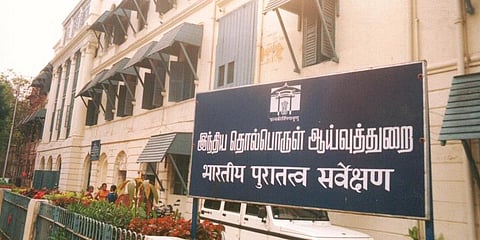

BENGALURU: Satellite imaging is now being used to establish the true real estate of ancient archaeological sites in India. These are governed by the Ancient Monuments and Archaeological Sites and Remains (AMASR) Act. According to the AMASR guidelines published by the Archaeological Survey of India (ASI), a site should be recommended for protection based on its authenticity and integrity.
Dr MB Rajani, National Institute of Advanced Studies (NIAS), Bengaluru, with the help of satellite imaging from Indian Space Research Organisation (ISRO) is trying to create a database of the 30 historical sites that feature in UNESCO’s World Heritage list.
“This database has to be used for bringing on record the integrity and extent of the historical sites so that we can protect the wholeness of the monuments and allow development activities keeping in mind the same,” said Director, NIAS, Dr Shailesh Nayak.
“Integrity of an archaeological site is defined as ‘a measure of its wholeness or intactness,’ including ‘all elements necessary to express its national importance from historical, artistic or archaeological points of view.’ While field survey and onsite observations are most appropriate methods to assess authenticity of a site, these methods are not adequate for assessing a site’s integrity,” said Rajani.
“It has been observed that at many sites, several unprotected archaeological structures have been overlooked by ground studies, though these structures may lie close to protected areas. Developmental activities often disintegrate and obscure the spatial associations and wholeness of the historical extent of heritage sites. The central issue therefore is how to identify boundaries that reflect a site’s wholeness or intactness, which is a necessary first step to enable effective site conservation and preservation,” added the remote sensing expert.
For instance, the 12th Century Halebidu temples in Karnataka are not just restricted to the protected areas marked by the ASI. “The larger fort may possess, among other things, sculpting workshops that have potential to contribute to and enhance understanding of the heritage of this magnificent Hoysala site,” said Rajani.The ancient university of Nalanda is a classic example of what we may have missed if we were to only go by the area marked by the ASI.
Nalanda was the largest and longest serving monastic-cum scholastic establishment in India between 5th Century AD and 13th Century AD. It was inscribed as World Heritage in 2016. “At its peak, the university accommodated 10,000 scholars. Such numbers could not have been supported within the 0.23 km2 area which is being protected at present.
Using geo-spatial technologies in conjunction with historical records of Nalanda and environs, we have identified archaeological remains in a much larger 9.79 km2 area which probably defines the historical extent of Nalanda,” said Rajani.Bodhgaya - the seat of Buddha’s enlightenment in Bihar was inscribed as World Heritage in 2002 is another such example of ‘lost heritage.’
“The extent of urbanisation in the last 20 years has caused a lot of damage to the archaeological landscape in the absence of information about the extent of the landscape,” she added.“While it may not be feasible to protect everything of historical significance, finding and documenting most of what has survived is achievable. Our interest therefore is to find and record as much of our cultural heritage as quickly as we can, so that we can make carefully considere decisions on what we must preserve,” said Rajani.“And to make that a reality it is incumbent upon all stakeholders to come together for capacity building of this monumental task,” said Nayak.